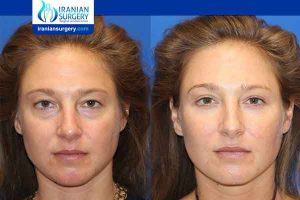1How long is recovery from fat transfer face?
Fat transfer recovery time varies from patient to patient, but most people should arrange to take at least 7-10 days off from work and other social activities. Initial healing takes a few weeks, after which the swelling will gradually subside before the final results are apparent.
2How long does it take for swelling to go down after fat transfer?
This usually peaks within 2-3 days after the procedure. After 72 hours the swelling and bruising rapidly subside. To minimize the swelling, sleep with your head elevated for 4 weeks after surgery. In the first 2 to 3 weeks after surgery it may seem as if you are too swollen or too much fat has been used.
3Is facial fat transfer permanent?
In the face, most of the transferred fat usually survives, but the results can be a bit less predictable. Typically, multiple fat transfer procedures will be needed to achieve desired results
4Does swelling always go away?
Mild swelling will usually go away on its own. ... Swelling and pain are very common with injuries. When you have swelling, you should look for other symptoms of injury that may need to be evaluated by your doctor.
5Can you transfer fat to your breast?
Fat transfer breast augmentation essentially uses liposuction to take fat from other parts of your body and inject it into your breasts. This is a breast augmentation option for women who are looking for a relatively small increase in breast size and would prefer natural results.
6What is face fat grafting?
Facial Fat Grafting Overview
Facial fat grafting, also known as autologous fat transplantation or lipoinjection, can fill in features of your face using fat cells extracted from other parts of your body. This fat may be harvested from your abdomen, thighs, buttocks, or elsewhere
7Can fat transfer be removed?
The Fat Transfer Process
Liposuction is used to remove fat from any area of the body where there is an undesired amount of fat. Commonly, patients request that fat be removed from the abdomen, flanks and thighs, but any area can be a donor site.
8Does fat transfer go away?
It can take up to six months for a surgical fat transfer to fully take effect, as some of the injected fat may be reabsorbed by your body during the first few months after the procedure.
9Does Fat Transfer to lips last?
Fat transfer to the lips takes about sixty to ninety minutes to perform. The patient can go home the day of the procedure. Lips augmented with fat stay plump for five years or longer
10How dangerous is liposuction?
As with any major surgery, liposuction carries risks, such as bleeding and a reaction to anesthesia. Possible complications specific to liposuction include: Contour irregularities. Your skin may appear bumpy, wavy or withered due to uneven fat removal, poor skin elasticity and unusual healing.



